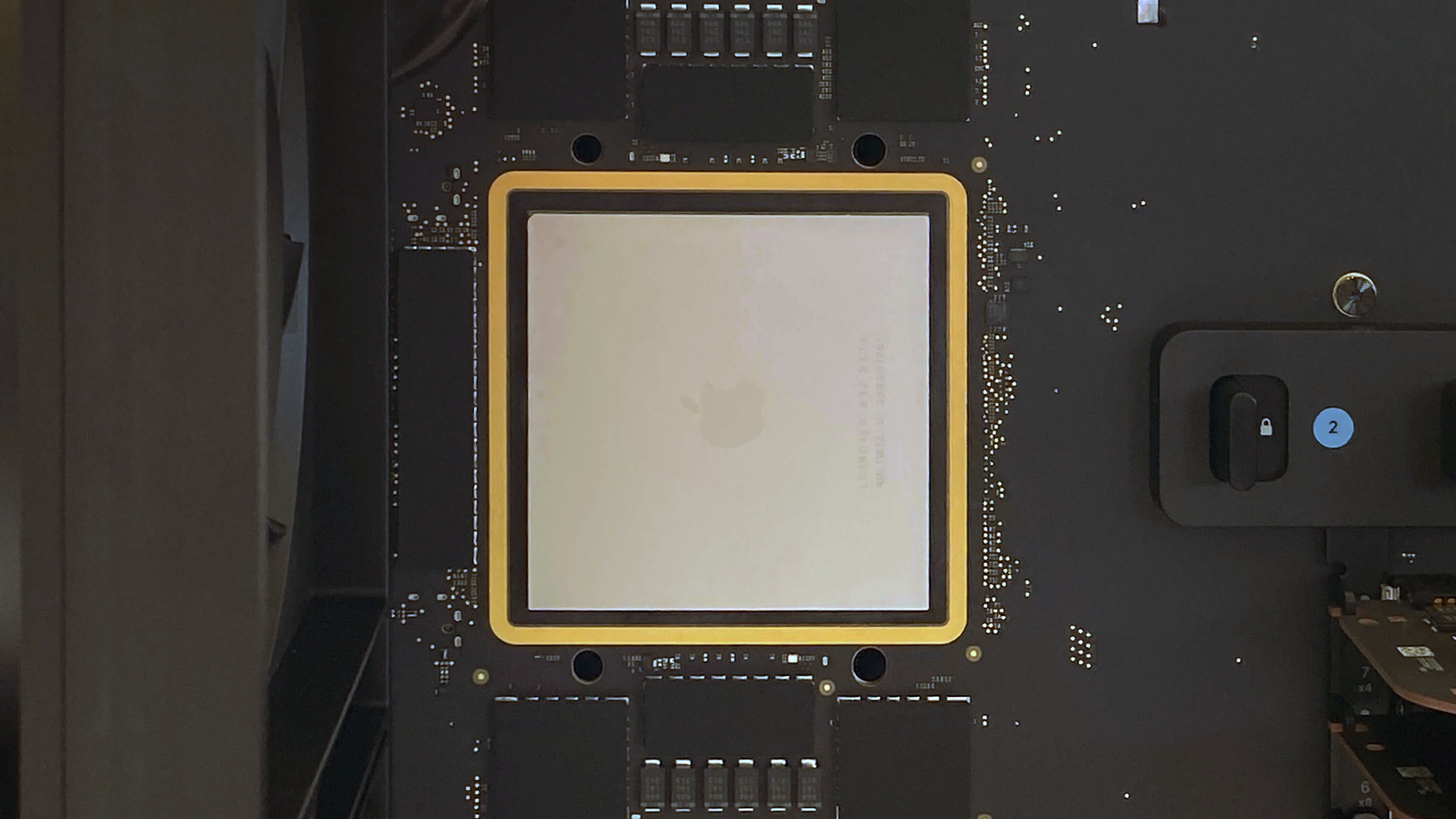Apple’s High-End M3 Ultra, M3 Max, and M3 Pro Expected to Get Major Upgrades

Apple’s M3-series system-on-chips is expected to get a major performance upgrade compared to predecessors since they are projected to be made on TSMC’s N3 (3 nm-class) fabrication processor and use all-new CPU and GPU microarchitectures. Indeed, the highest-end M3 Ultra will feature 32 CPU cores and an 80-cluster GPU, but the entry-level M3 will retain eight cores, a Bloomberg report suggests.
| null | M3 Ultra | M2 Ultra | M3 Max | M2 Max | M3 Pro | M2 Pro | M3 | M2 |
| CPU Top | 24P + 8E | 32C | 16P + 8E | 24C | 12P + 4E | 16C | 8P + 4E | 12C | 8P + 6E | 14C | 8P + 4E | 12C | 4P + 4E | 8C | 4P + 4E | 8C |
| CPU Base | – | – | – | – | 6P + 6E | 12C | 6P + 4E | 10C | – | |
| GPU Top | 80 clusters | 76 clusters | 40 clusters | 38 clusters | 20 clusters | 16 clusters | 10 clusters | 10 clusters |
| GPU Base | 64 clusters | 60 clusters | 32 clusters | 30 clusters | 18 clusters | 19 clusters | – | 8 clusters |
M3: Up to Eight Cores
Apple’s vanilla M1 and M2 SoCs are used for Mac Mini, MacBook Air, MacBook Pro 13, and iMac systems, which are quite popular. The company’s upcoming M3 ix expected to retain eight general-purpose cores (four high-performance and four energy-efficient cores) and an integrated GPU with up to 10 clusters. The first systems on their base are expected to hit the market earlier this year.
Apple’s M3 will reportedly be the first SoCs from the company’s third-generation PC processors and will also be the developers N3 chip designed for desktops and laptops. Apparently, the company decided not to increase core count in this SoC compared to M2, perhaps because it wanted to ensure the lowest possible power consumption or was sure that architectural advantages coupled with higher clocks will ensure a noticeable performance boost, or just wanted to maximize yields and keep costs down.
M3 Pro: Up to 14 Cores
The situation will get substantially better with M3 Pro that is projected to get 14 general-purpose cores (eight performance cores, six efficiency cores) in its top-end configuration, but its range-topping GPU will get 20 clusters, up from 19 clusters in M2 Pro. The M3 Pro in its maximum configuration will be more powerful than M2 Max in general-purpose workloads, but the latter will still have an edge in graphics applications.
Apple’s M3 Pro and M3 Max-based machine will likely hit the market sometimes in 2024.
M3 Max: Up to 16 cores
When it comes to M3 Max SoC, it is rumored to get 16 general purpose cores (12 performance cores and four energy-efficient cores) as well as up to 40 GPU clusters. Getting four additional high-performance cores is a big deal and will certainly bring substantial benefits to demanding software that M3 Max is architected to run. These will likely end up in high end MacBook Pros, the Mac Studio and Mac Pro.
M3 Ultra Up to 32 Cores
Meanwhile, the M3 Ultra system-in-package consisting of two M3 Max chips will therefore get 32 CPU cores and up to 80 GPU clusters. While 32 cores sounds quite massive when we talk about desktops, workstation-grade processors from AMD and Intel already have 56 – 64 cores and it remains to be seen what they are going to offer when Apple’s M3 Ultra-based Mac Studio or Mac Pro systems are available in the second half of 2024.
While Bloomberg’s Mark Gurman tends to be accurate with his reports about future Apple’s products, he is still an unofficial source and information from him should be taken with a grain of salt.














